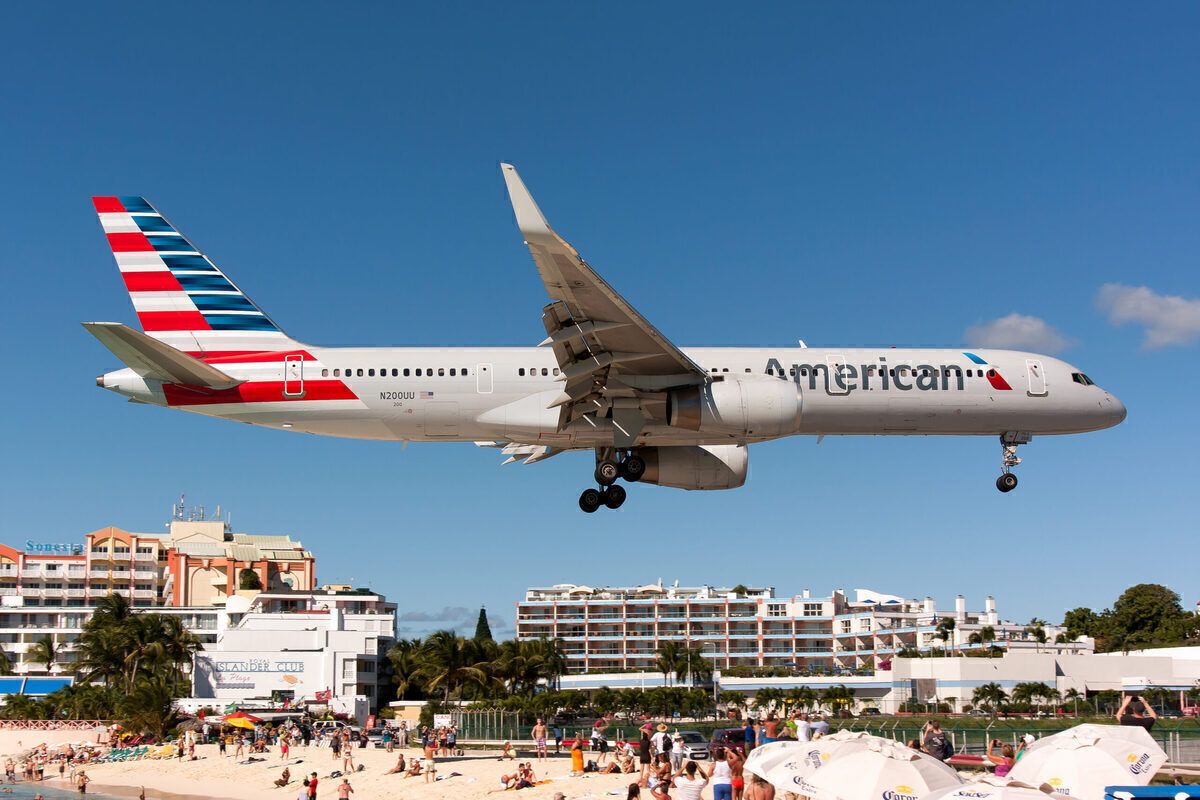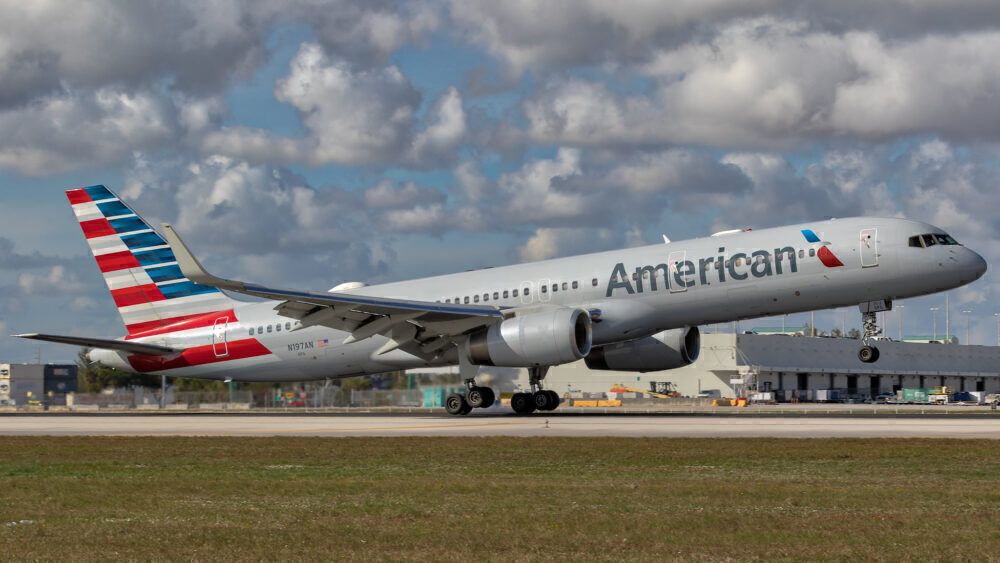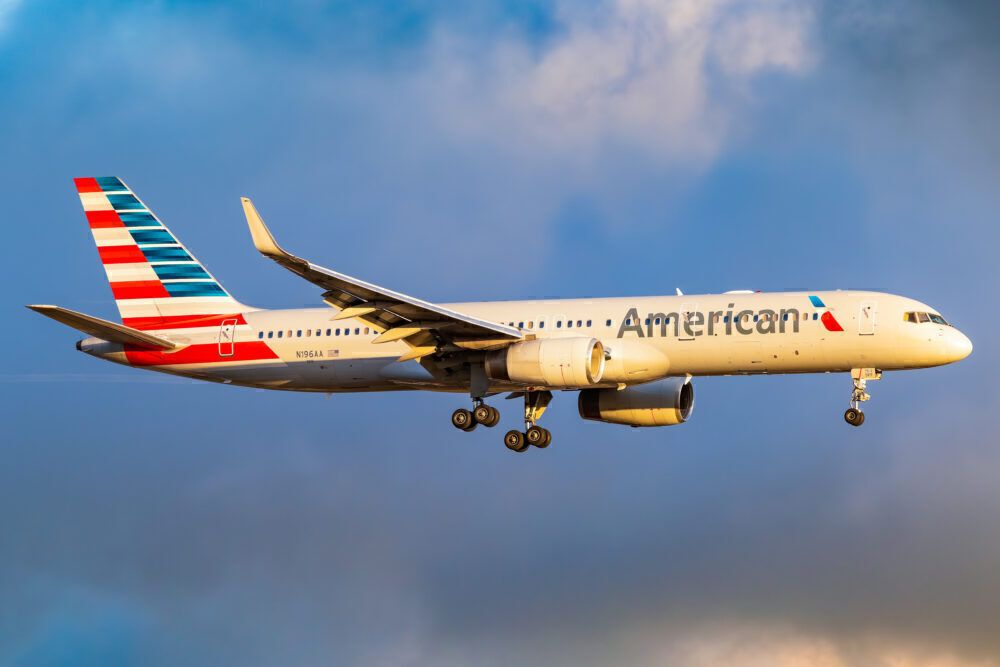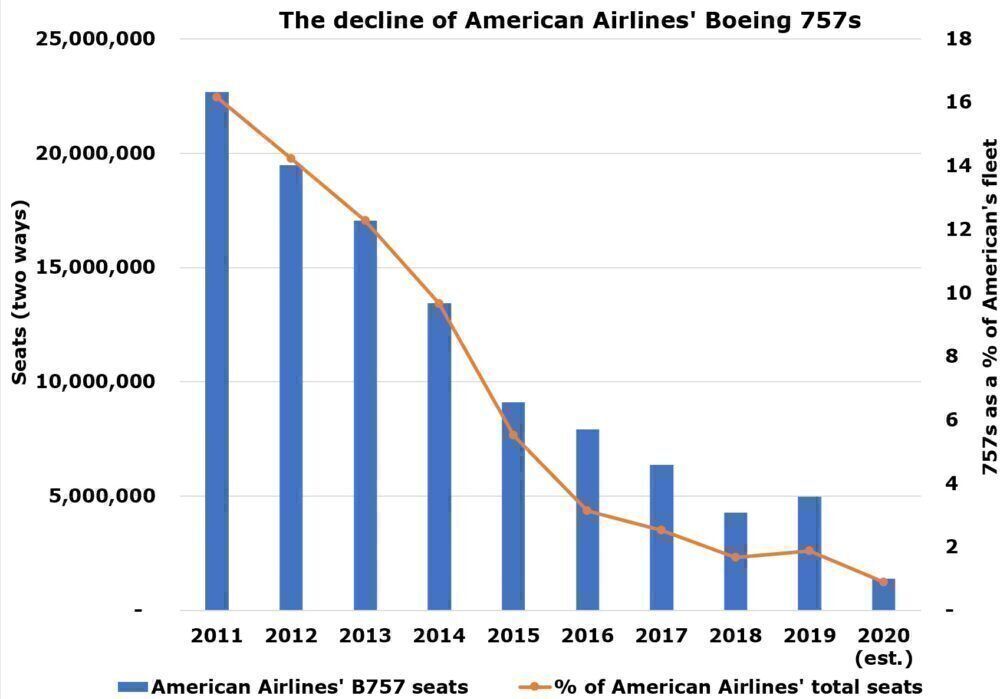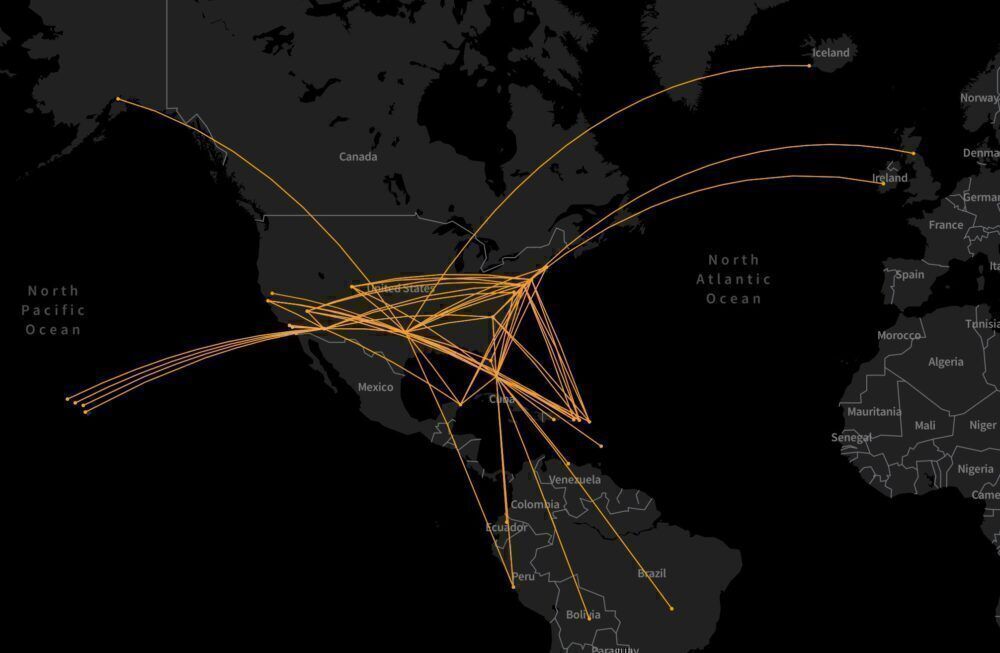American Airlines’ 757s were an important part of its fleet, although the writing was on the wall for many years. In 2019, the last full year before the 757 was retired, it had 70 routes, with Dallas the top airport by capacity and Miami number-one for routes.
American Airlines and its regional partner, American Eagle, permanently retired all of its A330-200/300s, B757s, B767s, CRJ-200s, and E190s last year. And earlier this year, it retired 22 older B737-800s. The carrier’s A330-200s weren’t initially expected to be retired, given they were younger and had been retrofitted, but they later were.
The retirement of most aircraft, including its A330-300s, B757s, B767s, and E90s, was already planned, yet some were kept in service longer than expected due to the then-ongoing MAX issue. Coronavirus offered the reason to retire them sooner.
The perfect reason
As unpleasant as it sounds, crises offer the perfect reason for withdrawing aircraft, laying off staff, increasing productivity, cutting routes, eliminating airports, renegotiating with all suppliers, and so on. American Airlines’ fleet cuts helped to achieve a leaner, meaner foundation for the future from prioritizing, right-sizing, and retreating to core. Coronavirus offers airlines the chance to emerge stronger and more competitive.
Stay informed: Sign up for our daily and weekly aviation news digests.
Alongside American Airlines’ aircraft retirement was Project Oasis, the significant fleet harmonization and seat densification plan. This involved adding seats to its A321s and B737-800s, driving revenue opportunities per flight and reducing seat costs; a win-win situation, economically speaking at least. This followed the trend of many airlines across the world.
Showing discipline
American Airlines now has a simplified fleet based on B737s, the A320 family, B787s, and B777s. Its B777 fleet will be progressively focused on its -300ERs as older -200s are replaced by B787s. Its simplified, newer fleet will produce various cost, scheduling, and product benefits, far beyond lower fuel consumption and maintenance. Fleet standardization is a key element of disciplined airlines.
American's 757s
The writing was on the wall years ago for American's 757s. In 2011, they had almost 23 million seats, analyzing OAG data indicates, or around 16% of the airline's total. And it decreased virtually every year since then, ending 2019 – before the pandemic took hold – with just 2%.
Top airports for American's 757s
American's 757s operated some 70 routes in 2019, the last full year for the type, including some served only on a limited-time basis. Of these 70, 42 were domestic, with the top-four by total seats all hub-to-hub routes:
- Dallas to Philadelphia: 603,980 two ways seats
- Dallas to Miami: 366,432
- Philadelphia to Miami: 222,816
- Dallas to Phoenix: 219,584
35 airports saw the 757 in 2019, with Dallas the number-one airport for it, as you'd expect from the figures above, although Miami was firmly second. The type had no scheduled presence at O'Hare (it was last served in 2018), while Charlotte had only a small presence. Charlotte is American Airlines’ second-largest hub, with almost 9,000 weekly flights and 160 routes in mid-April.
Dallas was top... but so was Miami
While Dallas led by 757 seats, Miami did for routes. It had 21 in its final full year, including 11 international across the Caribbean, Mexico (only Cancun), and South America. Quito was top by capacity, but Brasilia – at 3,606 miles – was the longest. Yet that route was outdone by American's short-lived Dallas-Keflavik service, itself replacing Icelandair, at 3,742 miles. Like Brasilia and Keflavik, the iconic 757 is no more for American Airlines.

